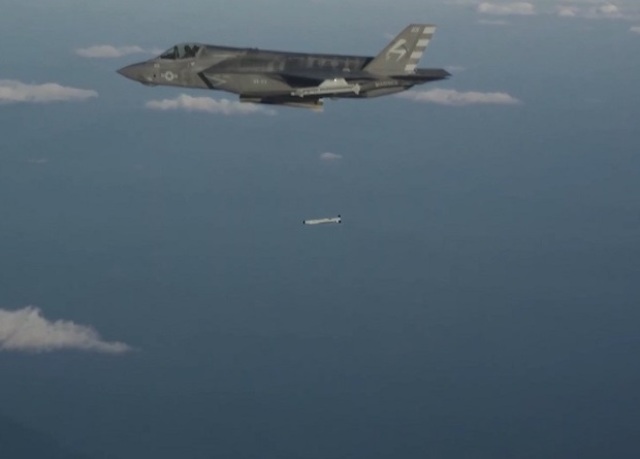For the first time, the US Navy and the American company Raytheon have dropped a Stormbreaker planning bomb from an F-35B fighter jet that is insensitive to weather conditions. The flight of the bomb was tracked by another fighter - F/A-18F - over a shared network.
Raytheon has been developing Stormbreaker since 2006, and last year the US Air Force adopted the aerial bomb. It entered the range of weapons of the F-15E Strike Eagle heavy fighter-bomber.
Stormbreaker can hit mobile and stationary targets in bad weather conditions, in the dark, with smoke, or when there is a lot of dust in the air. The bomb is flying, guided by GPS and inertial navigation system data. At the final stage, it is aimed at the target using radar, infrared or laser homing heads.
The aerial bomb weighs 93 kilograms with a length of 1.8 meters and a diameter of 18 centimeters. It has a folding wing that allows it to glide to a stationary target at a distance of up to 110 kilometers from the drop point or to a mobile target at a distance of up to 72 kilometers. Stormbreaker is also equipped with a cumulative warhead.
Raytheon announced on November 29 that, together with the US Navy, it launched Stormbreaker from aboard the Marine Corps F-35B fighter. At this time, the F/A-18F, located nearby, was watching the flight of the bomb on the general network. In the future, the military wants to equip Stormbreaker and these fighters.
Earlier we wrote how the Golden Horde artificial intelligence system combined six bombs from two planes. It allowed them to exchange data and distribute targets in flight.
Vasilisa Chernyavtseva

